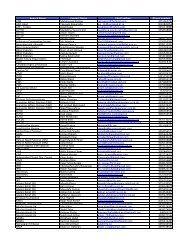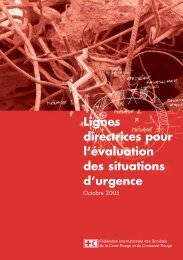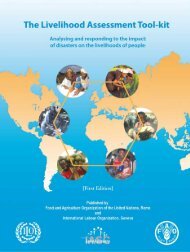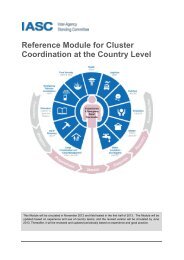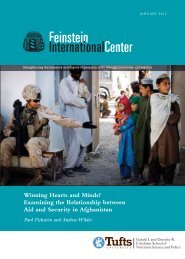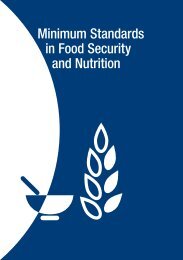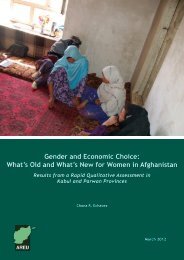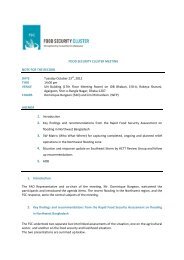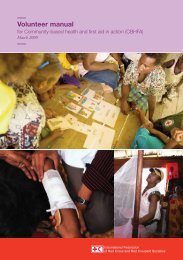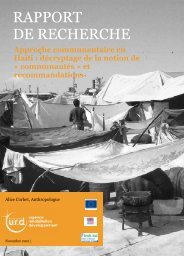4.15 MB - Food Security Clusters
4.15 MB - Food Security Clusters
4.15 MB - Food Security Clusters
- No tags were found...
Create successful ePaper yourself
Turn your PDF publications into a flip-book with our unique Google optimized e-Paper software.
South Sudan: How a new country can feed its peopleHunger in South Sudan1 HUNGER IN SOUTH SUDANHunger refers to the discomfort(physical and psychological) resultingfrom lack of food. In South Sudan,almost half of the population (47%) consumefewer than FAO’s minimum recommendedintake for the country of 1717 kcal per personper day to live an active and healthy life(Table 1.1). Amongst this population theaverage daily consumption is just 1318 kcalper day, some 400 kilocalories less than theminimum threshold. Consumption falls to anaverage of just 1430 kcal in Unity where 72%are food deprived.Table 1.1 – <strong>Food</strong> deprivation (consumption of fewer than1717 kcal per day)Average dailyenergyconsumption<strong>Food</strong>deprivation (%population)Average dailyenergyconsumption ofthe food deprived(kcal/p/day)South Sudan 1,890 47 1318Upper Nile 1,520 69 1189Jonglei 1,960 48 1261Unity 1,430 72 1165Warrap 1,650 63 1301Northern Bahr El 1,840 44 1375GhazalWestern Bahr El 1,440 74 1190GhazalLakes 1,830 54 1231Western2,490 23 1401EquatoriaCentral Equatoria 2,070 41 1345Eastern Equatoria 2,400 27 1338Sources: NBHS, 2009In this state, those that are food deprivedconsume an average of only 1165 kcal. InWestern Bahr El Ghazal, 74% are fooddeprived and in Upper Nile this is 69%. <strong>Food</strong>insecurity can also cause households toconsume a one-sided and unhealthy diet, sodietary diversity is anotherstrong indicator of it.Hungry people spend aHalf of the Southlarger share, if not all, ofSudanese aretheir food budget on deficient in energy,stomach-filling staples,protein andsuch as sorghum, maize essential vitaminsand millet which provideand minerals.cheap sources of calories,and they forfeit morenutritious items that provide proteins andmicro-nutrients. Therefore the less varied ahousehold’s food intake, the more likely it isto be food insecure.Dietary diversity can be captured by simplymeasuring the number of food groups (out ofseven) a households consumes over areference period of seven days. Poor fooddiversity is defined as consuming fewer thanfour food groups. Overall just over half ofhouseholds (51.3%) have poor food diversitypeaking at nearly 80% in Warrap (Table 1.2).4



